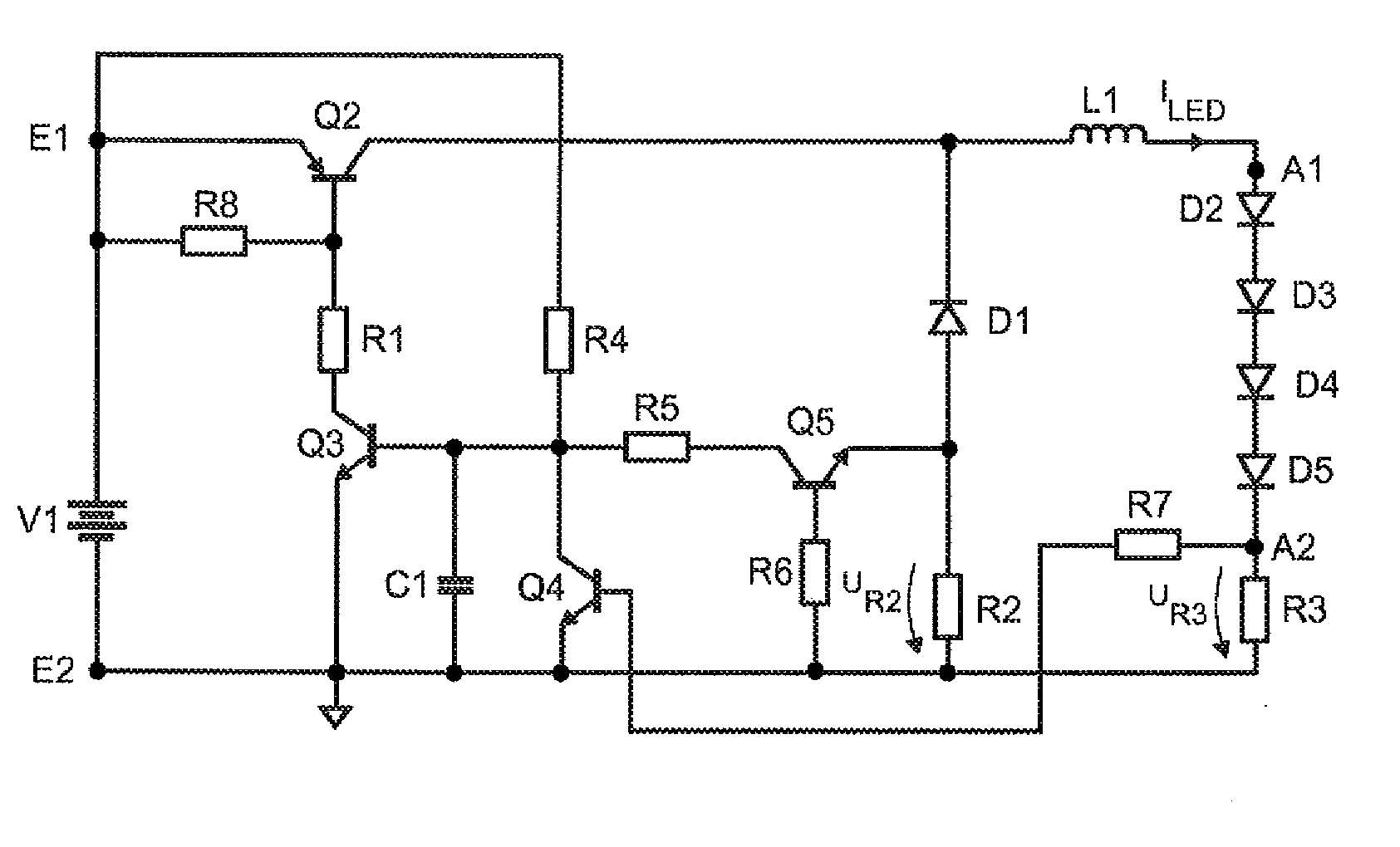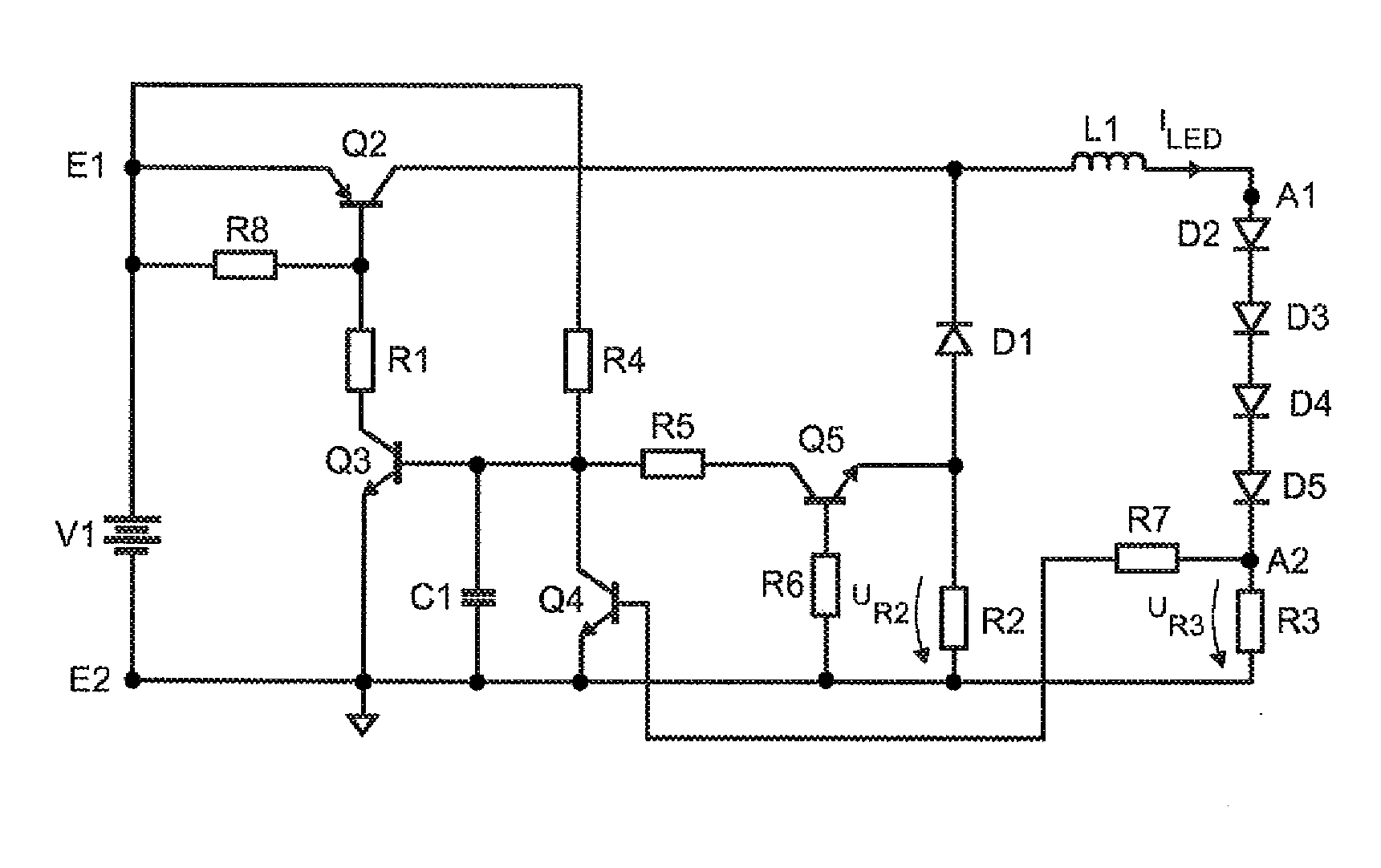Buck converter and method for providing a current for at least one LED
a technology of buck converter and led, which is applied in the direction of electric variable regulation, process and machine control, instruments, etc., can solve the problems of often too expensive integrated circuits for mass production, and achieve the effect of speeding up the clearance of the base of the buck main switch
- Summary
- Abstract
- Description
- Claims
- Application Information
AI Technical Summary
Benefits of technology
Problems solved by technology
Method used
Image
Examples
Embodiment Construction
[0026]FIG. 1 shows a schematic illustration of an exemplary embodiment of a Buck converter according to the invention. This has an input with a first input connection E1 and a second input connection E2, between which a low-voltage DC voltage source V1 at, in the present case, 9 V is coupled. The input connection E2 is coupled to a reference potential. The first input connection E1 and the second input connection E2 have the series circuit comprising a Buck main switch Q2, a Buck diode D1 and a nonreactive resistor R2 coupled between them. The connecting point for the Buck main switch Q2 and the Buck diode D1, on the one hand, and a first output connection A1 have a Buck inductor L1 coupled between them. The output connection A1 and a second output connection A2 have an LED, which in the circuit diagram is represented by the series circuit including D2, D3, D4 and D5, coupled between them. The output connection A2 and the reference potential have a non-reactive resistor R3 coupled b...
PUM
 Login to View More
Login to View More Abstract
Description
Claims
Application Information
 Login to View More
Login to View More - R&D
- Intellectual Property
- Life Sciences
- Materials
- Tech Scout
- Unparalleled Data Quality
- Higher Quality Content
- 60% Fewer Hallucinations
Browse by: Latest US Patents, China's latest patents, Technical Efficacy Thesaurus, Application Domain, Technology Topic, Popular Technical Reports.
© 2025 PatSnap. All rights reserved.Legal|Privacy policy|Modern Slavery Act Transparency Statement|Sitemap|About US| Contact US: help@patsnap.com


